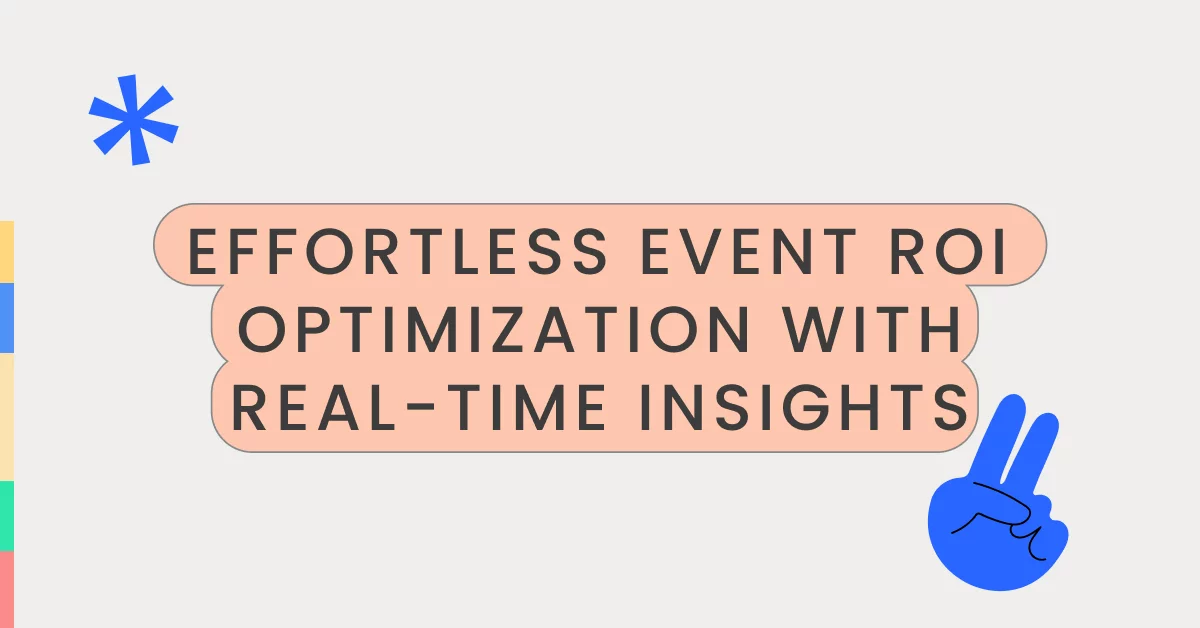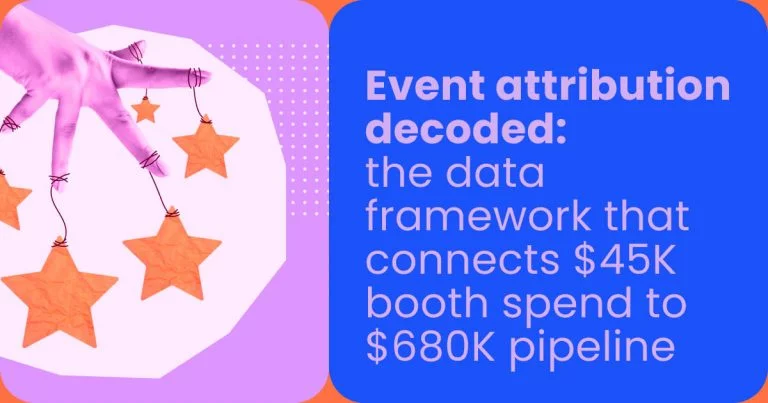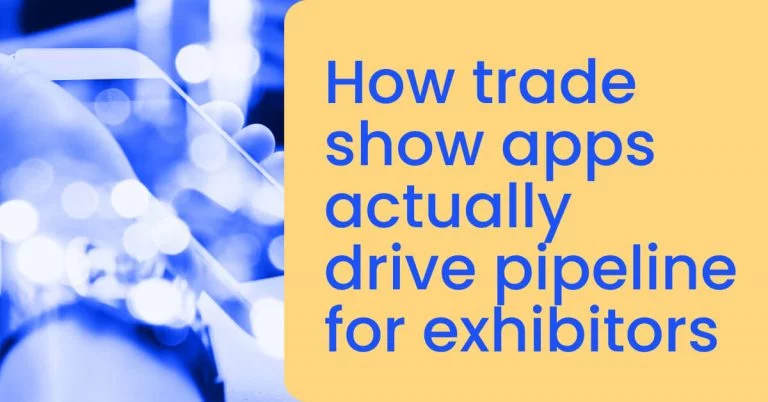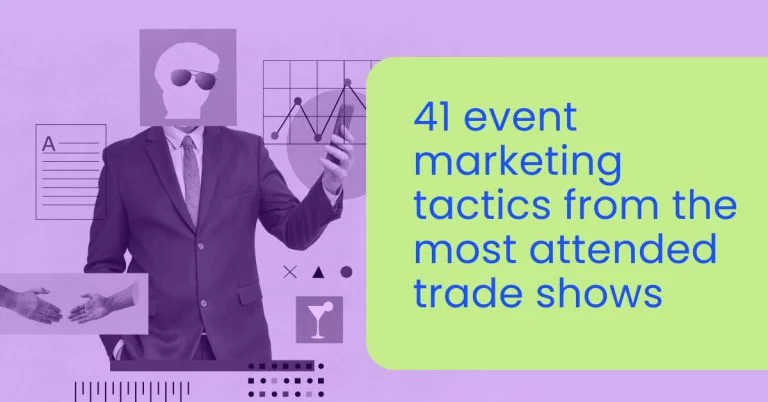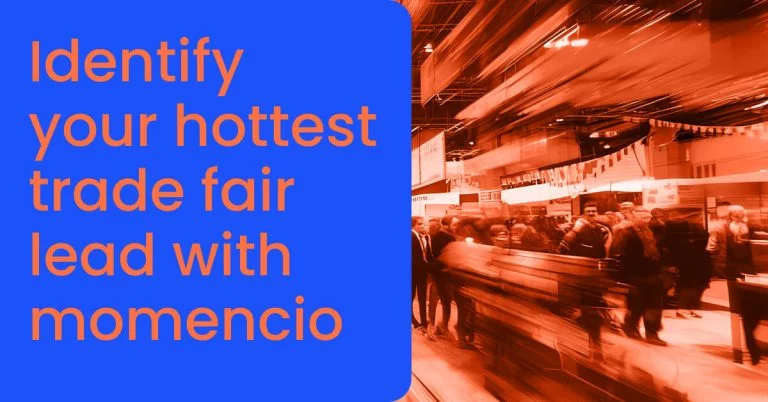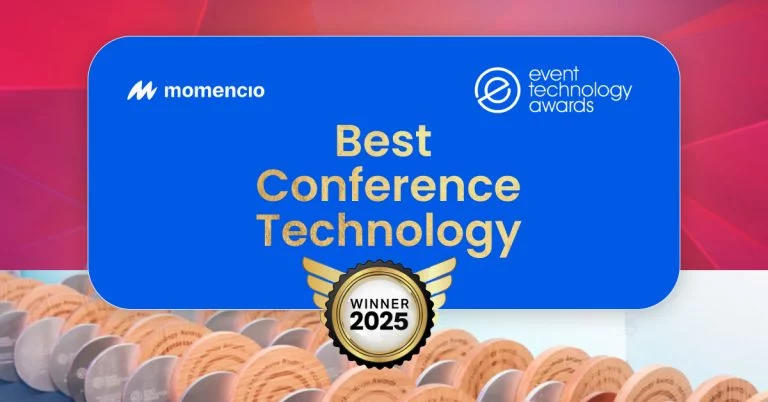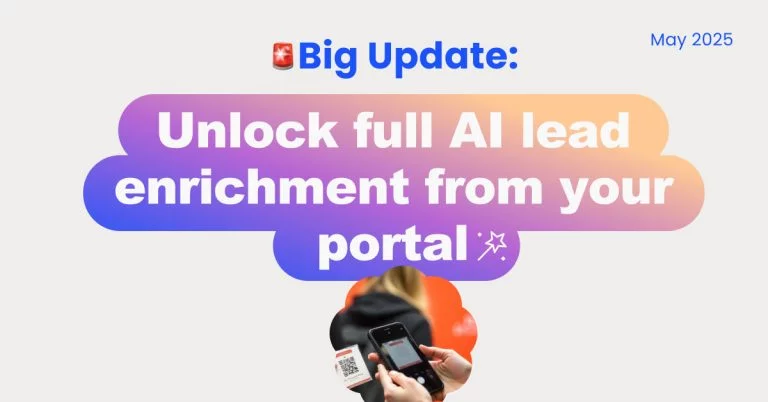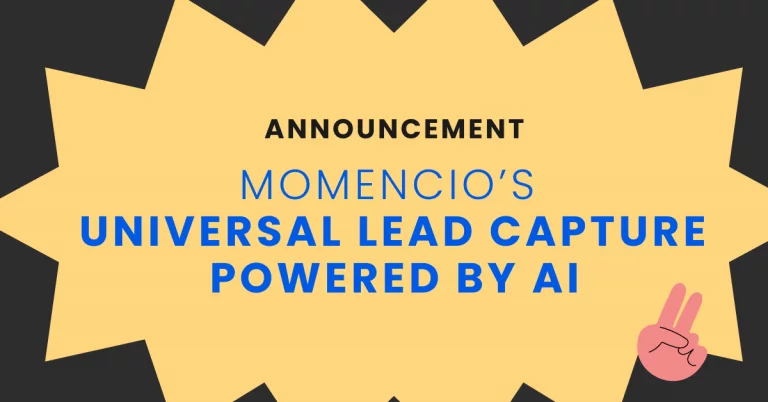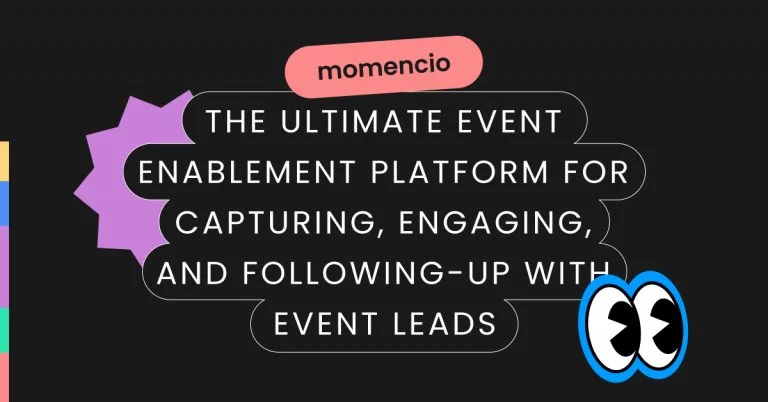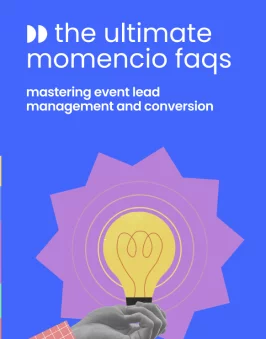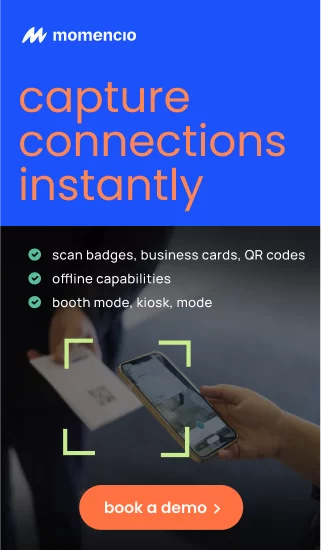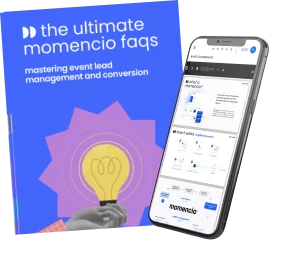Data-driven strategies are transforming the way exhibitors approach trade shows and in-person events, optimizing their ROI with precision. For many, however, the challenge lies in making every moment count—from first interactions to post-event follow-ups. Most businesses see a 3:1 ROI ratio from event engagement when data insights guide their approach. Yet, the opportunity to maximize that number hinges on capturing, analyzing, and acting on real-time data during and after the event.
To help exhibitors enhance event returns, this article will reveal key strategies in event ROI optimization through effective lead capture, real-time analytics, and customized follow-ups. Whether you are an event planner seeking to boost client engagement or a trade show exhibitor aiming to make meaningful connections, these insights will guide you in capturing valuable data, refining your approach to lead nurturing, and ultimately converting those leads into measurable revenue.
Understanding the role of data in optimizing event ROI
Maximizing event ROI begins with understanding attendee behaviors and interactions in real time. Exhibitors who invest in data tools like real-time analytics software gain insights into foot traffic patterns, session engagement, and visitor interactions. This data reveals which tactics work, helping event professionals make real-time adjustments that enhance attendee engagement and optimize booth interactions.
Data not only impacts in-the-moment decisions but also provides exhibitors with actionable insights into the entire attendee journey. By analyzing engagement metrics—such as time spent at a booth or content downloads—exhibitors can identify their highest-quality leads, a crucial advantage when planning immediate follow-ups. Leveraging these insights for post-event strategy enables exhibitors to personalize outreach and build rapport, making them more likely to secure a return on their event investment.
Real-time analytics also play a key role in hybrid event setups, where digital engagement can be analyzed alongside in-person attendance. By integrating hybrid event data into a unified platform, exhibitors can better understand their reach across both channels, making it easier to refine future strategies for both online and offline engagement.
Capturing valuable insights through lead retrieval and attendee engagement
At any trade show or in-person event, a robust lead retrieval strategy lays the groundwork for effective event ROI optimization. Exhibitors who leverage tools like badge scanning, interactive surveys, and gamified experiences can capture attendee information in real time, ensuring that no valuable interaction is overlooked. This not only streamlines the lead capture process but also enriches the data by capturing attendee preferences and behavioral patterns.
Advanced lead retrieval tools, such as mobile apps or badge-scanning systems, make it possible to gather and qualify leads based on their interactions at the booth. These tools track critical data points—like booth visits, interest in particular products, and engagement with digital content—that help exhibitors understand which leads are most likely to convert. For example, an attendee who spends significant time interacting with a product demo or downloads specific resources signals a stronger interest than someone who only briefly stops by. This insight can inform a more targeted post-event follow-up strategy, boosting the probability of conversion and ultimately enhancing ROI.
Engagement data gathered from lead retrieval solutions can also provide insights into optimal attendee engagement strategies. By understanding which booth features or activities attract the most interest, exhibitors can refine their approach to in-person engagement and increase foot traffic at future events. A well-executed lead capture strategy not only helps exhibitors generate a high volume of leads but also enables them to prioritize quality interactions, which is essential for long-term event ROI optimization.
Real-time analytics: live insights that drive action
Real-time analytics are the backbone of meaningful event ROI optimization. For exhibitors, these insights eliminate guesswork by showing exactly where to focus efforts at any given moment on the event floor. Picture this: rather than passively observing foot traffic, an exhibitor is using data to actively shape each engagement, from reallocating staff to popular areas to promoting high-interest product displays that attendees consistently return to. Every attendee interaction translates into an actionable data point, refining both current and future event strategies.
In practice, real-time insights empower exhibitors to do three things immediately:
Prioritize high-intent leads by tracking booth interactions that signal strong interest, like repeated visits or engagement with specific products.
Adapt in the moment by identifying underperforming areas of the booth or event, and reallocating resources to maximize engagement. Say a product demo sees a 30% higher engagement rate than static displays—exhibitors can adapt by directing attendees toward interactive elements that have higher conversion potential.
Strengthen hybrid reach by unifying in-person and virtual engagement data. Hybrid setups often create fragmented data. By integrating both channels, exhibitors get a full picture of audience behaviors, allowing them to customize follow-ups for both physical and digital attendees effectively.
Crafting personalized engagement strategies through data
Personalization is no longer just a competitive advantage; it’s essential for event ROI optimization. With precise data from real-time analytics, exhibitors have the tools to tailor engagement based on individual attendee behavior, significantly increasing the relevance and impact of follow-ups. Unlike generic mass outreach, data-backed personalization means crafting outreach that acknowledges specific attendee interests and needs—driving both engagement and conversion.
Consider a high-value lead who spent considerable time at an interactive product demo, requested additional resources on specific features, and left insightful feedback. This behavioral data should inform a highly customized follow-up: an email that references the exact demo, links to a tailored microsite with additional resources, or even an invitation to a one-on-one consultation. This approach not only keeps the interaction relevant but also reflects a deep understanding of the attendee’s needs, making conversion more likely.
Data-driven personalization is equally impactful in hybrid event settings. Virtual and in-person attendees engage differently, so understanding these nuances allows exhibitors to create a more targeted follow-up strategy. For example, virtual attendees who engage with specific session content can be segmented and targeted with exclusive digital resources, while in-person attendees may benefit from a face-to-face follow-up offer. By aligning these efforts with the unique needs of each attendee, exhibitors increase both engagement and post-event conversions.
With these strategies, personalization becomes an engine for measurable ROI, driving results that align closely with attendee preferences and increasing the overall effectiveness of the event.
Turn insights into action with effective post-event follow-up strategies
Maximize your event ROI optimization by acting on event data with smart, targeted follow-up strategies that directly address attendee interests. What happens after the event often determines whether your interactions convert into sales or fade into missed opportunities. Here is how to make follow-up count:
Segment leads based on engagement behavior
Begin by categorizing leads according to their engagement levels and specific behaviors. Treat high-interest actions—like visiting multiple areas of your booth or engaging deeply with product demos—as indicators for a more tailored approach. Follow up with customized content, such as case studies or product guides that resonate with their interests. For lower-engagement leads, initiate a nurturing sequence that keeps your brand top-of-mind until they’re ready to engage further.
Integrate with CRM and marketing automation for seamless follow-up
Sync all event data, including interaction notes, lead scores, and engagement details, directly into your CRM. This integration allows sales teams to access complete, actionable lead profiles instantly. Use marketing automation to deliver relevant content automatically, ensuring high-priority leads receive timely, customized outreach. Set up automated workflows to handle emails, content downloads, and reminders, creating a consistent flow from initial interaction to sales engagement without missing a beat.
Time and tailor follow-ups to boost conversions
Follow up within 48 hours to significantly increase conversion chances. Instead of sending generic emails, deliver highly relevant content—such as a video that showcases the exact features an attendee engaged with. Automated, targeted emails maintain continuity from the event floor to the sales conversation, reinforcing your value and keeping attendees engaged.
By treating every follow-up as a chance to build relationships and deliver value, you’ll convert more leads and amplify the long-term ROI of each event.
Drive deeper engagement with interactive tech experiences
Incorporating interactive experiences into your booth setup can significantly enhance attendee engagement, making your event experience memorable and highly impactful. Tools like touchscreens, AR demos, and gamified elements encourage attendees to spend more time at your booth, creating more substantial engagement data to analyze and act upon. Interactive elements not only capture attention but also enable exhibitors to gather real-time insights into attendee preferences.
For instance, if attendees consistently interact with a product demo or virtual reality experience, these behaviors provide valuable cues for your post-event follow-up. By connecting interactive technologies with real-time analytics, exhibitors gain a more precise understanding of lead quality. Use these insights to tailor outreach for prospects who engaged most with specific offerings, setting the stage for highly relevant follow-ups that align with their demonstrated interests.
Interactive technology also boosts engagement at hybrid events, where virtual attendees can interact with live-streamed demos, participate in real-time Q&As, or explore virtual booths. This approach ensures that virtual attendees remain engaged, providing data on their interests and preferences that is equally valuable as data from in-person interactions. Leveraging technology strategically in both in-person and hybrid formats maximizes overall engagement and boosts ROI.
Streamline lead scoring and prioritization for faster conversions
One of the biggest challenges in event ROI optimization is identifying and prioritizing high-quality leads efficiently. momencio’s advanced lead scoring mechanism show exhibitors a clear indication from leads live behavior, engagement level, and interests, directing sales efforts toward the most promising prospects immediately after the event.
Develop a lead scoring framework that assigns points based on specific actions: time spent at your booth, engagement with interactive features, attendance at product demos, and expressed interest during conversations. Leads with higher scores should be prioritized for follow-up, ensuring they receive immediate, tailored outreach while interest is still fresh. For example, an attendee who interacted deeply with multiple demos and requested additional information scores higher than a passive booth visitor, signaling a strong potential for conversion.
Automating this process with CRM integration helps streamline lead management, enabling your team to follow up with high-priority leads promptly. By focusing on the most engaged prospects, exhibitors reduce time spent on low-interest leads, boosting the efficiency of follow-ups and driving quicker conversions. With a refined scoring system, your team can zero in on leads with genuine buying intent, amplifying the impact of each event.
Measure and refine event ROI with continuous improvement strategies
Achieving true event ROI optimization requires a commitment to ongoing measurement and refinement. Each event provides insights not just into attendee engagement but also into which strategies yield the highest returns, allowing exhibitors to fine-tune their approach over time. Here’s how to build a framework for continuous improvement.
Define clear metrics that align with your goals
Start by establishing specific ROI metrics that directly reflect your event objectives. These might include metrics like lead quality (rather than just quantity), conversion rates, engagement duration, or follow-up response rates. Align these metrics with your business goals so that every data point you collect informs a bigger picture. For instance, if your goal is to increase sales from trade show leads, track metrics that show engagement depth, such as time spent at demos or content interactions, to predict potential conversions.
Analyze data from past events to identify trends
Effective analysis goes beyond surface-level metrics. Look for trends across multiple events to determine what consistently drives engagement and revenue. Are product demos consistently drawing high-quality leads? Do particular booth elements see higher foot traffic or generate better engagement scores? By understanding these patterns, you can refine future events to focus on high-impact areas. Use insights from both high and low-performing events to inform tactical changes, such as reallocating resources to interactive displays that attract attendees or fine-tuning booth design for better flow.
Implement feedback loops for faster adjustments
To maximize event success, create feedback loops that allow your team to adjust strategies quickly. Post-event debriefs, attendee feedback, and insights from CRM data reveal valuable information about what resonates with prospects. Use this data to refine your approach ahead of the next event. Incorporate real-time feedback from current events as well, adjusting your approach if a specific booth area or activity underperforms compared to expectations. Quick pivots based on attendee behavior help ensure that future events are aligned with proven engagement tactics.
Apply learnings to develop a continuous improvement model
Make event ROI optimization a core part of your event strategy by implementing a continuous improvement model. After each event, assess what worked, document areas of improvement, and update your strategy accordingly. This proactive approach ensures each event builds on the successes and learnings of past efforts, allowing you to consistently drive higher returns with each subsequent event.
By continuously refining your strategy based on data, analysis, and feedback, you’ll develop an event approach that not only meets but exceeds ROI targets, delivering measurable success and competitive advantage.
Conclusion
Mastering event ROI optimization is about more than just gathering data; it’s about turning that data into a clear roadmap for maximizing engagement, lead conversion, and long-term business impact. By using real-time analytics, crafting tailored follow-ups, and committing to continuous improvement, exhibitors can ensure that every event becomes a powerful tool for growth.
From identifying high-value leads on the event floor to refining tactics through post-event analysis, a data-driven approach gives exhibitors a competitive advantage. By aligning engagement strategies with specific attendee behaviors and continuously refining based on outcomes, you can create events that drive significant ROI and build lasting client relationships.
FAQs
- What are the essential metrics for tracking event ROI?
- For effective event ROI optimization, focus on metrics such as engagement duration, lead quality, conversion rates, booth traffic, and follow-up engagement rates. These indicators provide a comprehensive view of attendee interest and help gauge how well your strategy is converting interactions into tangible results.
- How soon should I follow up with leads after an event?
- Ideally, follow up within 48 hours. Prompt outreach ensures that your brand remains top-of-mind and increases the likelihood of conversion. For high-interest leads, customize your follow-up to reflect specific interactions, such as product demos or content downloads.
- How can real-time analytics improve in-person engagement?
- Real-time analytics allow exhibitors to monitor attendee behavior live, making it possible to adjust strategies on the spot. For example, if a product display sees high engagement, you can allocate more resources to that area to capture additional interest.
- What is the benefit of CRM integration for event follow-up?
- CRM integration consolidates all event-related data, creating complete lead profiles that enable personalized, data-driven follow-ups. With CRM, you can ensure that no lead is overlooked and that your outreach is timely and relevant to attendee interests.
- How can I apply insights from one event to future events?
- Post-event analysis helps identify successful tactics, engagement trends, and areas for improvement. Documenting these insights allows you to refine future strategies, improving your overall ROI by focusing on high-impact areas.
